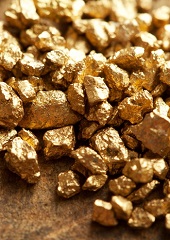The Golden Curse of the Peruvian Amazon
How is illegal gold mining destroying one of Peru’s most beautiful regions?
January 16, 2012

Peru’s Madre de Dios region is rich in cotton, coffee, sugarcane, cacao, Brazil nuts and palm oil. However, plentiful gold has attracted tens of thousands of illegal miners whose activities are having a negative effect not only on precious species in the environment, but also on the health and quality of life of both native and new populations in the region.
Alluvial gold mining in Peru’s Amazon rainforest has rapidly spread in recent years, driven by the high price of gold. Although many jungle mining concessions have been granted by Peru’s energy and mines ministry, the informal sector has grown out of control, and it is estimated that almost a quarter of the gold produced in Peru, the world’s sixth-largest producer, is illegal.
The majority of this illegal gold comes from the Madre de Dios region. Local non-governmental organizations believe that there are up to 30,000 miners in the area.
Gold deposits are mined by both large-scale operators and small-scale miners who use hydraulic mining techniques and heavy machinery to expose potential gold-yielding gravel deposits. Gold is extracted by a sluice box, a piece of gold-prospecting equipment that has been in continuous use for over 100 years. The sluice box is used to separate heavier sediment, and mercury is also used for amalgamating the precious metal.
Several studies have shown that small-scale miners are less efficient in their use of mercury than industrial miners. As a result, 2.91 pounds of mercury are released into waterways for every 2.2 pounds of gold produced. It is estimated that more than 40 tons of mercury are absorbed into the rivers of Madre de Dios, poisoning the food chain.
Mercury not only contaminates waterways and becomes a serious threat to human health, but is also a dangerous toxin to fish. Fish in the area contain three times more mercury than the safe levels permitted by the World Health Organization. According to the World Wildlife Fund, “After fossil fuel burning, small-scale gold mining is the world’s second-largest source of mercury pollution, contributing around one-third of the world’s mercury pollution.”
Peru is not the only country to experience the drawbacks of gold mining. In Suriname, several foreign companies have gold and diamond exploration programs in the country, which are producing the same deleterious effects as in Peru.
A few decades ago, Suriname, a former Dutch colony situated along the northeast coast of South America, was one of the wealthiest countries in that region, a situation that changed after bauxite (its main export) left the country in a very difficult economic situation. To overcome that, the government of Suriname has been portioning off vast areas of the rich rainforest to multinational mining companies.
However, as in the Peruvian Amazon, gold exploitation brought with it several economic, physical, health and environmental effects. It produced serious soil and landscape degradation, left open pits with standing water that are a fertile habitat for disease-carrying mosquitoes that facilitate malaria transmission, and left serious mercury contamination in the rivers. Many of these effects persist even after the mining activities have ceased.
Mercury contamination is not the only drawback of small-scale mining, however. Another serious problem is the significant amount of deforestation it produces while clearing forests for the construction of roads to open remote areas to transient settlers and land speculators. Deforestation also results from cutting trees to obtain building material and wood to be used as fuel.
In Peru, the enormity of the damage has been documented in a study by American, French and Peruvian researchers published in the peer-reviewed magazine PLoS ONE. According to the study, using satellite imagery from NASA, researchers were able to assess the loss of 7,000 hectares (15,200 acres) of forest due to artisanal gold mining in Peru between 2003 and 2009. This is an area larger than Bermuda.
Jennifer Swenson, the lead author of the study, says that such enormous deforestation is “plainly visible from space,” and suggests that Peru should limit the importation of mercury.
In addition to these problems, illegal gold mining has significantly increased the number of 12-to-17-year-old girls and young women drafted by prostitution rings. These young women are brought from all over the country to brothels that have sprung up in mining camps. Many of the women who fall into these prostitution rings eventually disappear, and are never seen again. Miners also bring diseases to local indigenous populations.
While Peruvian authorities have sent almost 1,000 security forces to destroy river dredgers used by illegal gold miners in the Madre de Dios region, even more drastic measures are needed, such as heightened vigilance and stricter regulation. At stake is the survival of what has been recognized as one of the most biologically rich areas in the world.
Takeaways
It is estimated that more than 40 tons of mercury are absorbed into the rivers of Madre de Dios, poisoning the food chain.
At stake is the survival of what has been recognized as one of the most biologically rich areas in the world.
Peru lost 7,000 hectares of forest due to artisanal gold mining between 2003 and 2009. This is an area larger than Bermuda.
Read previous
Is Russian Winter Turning Into Spring?
January 13, 2012
